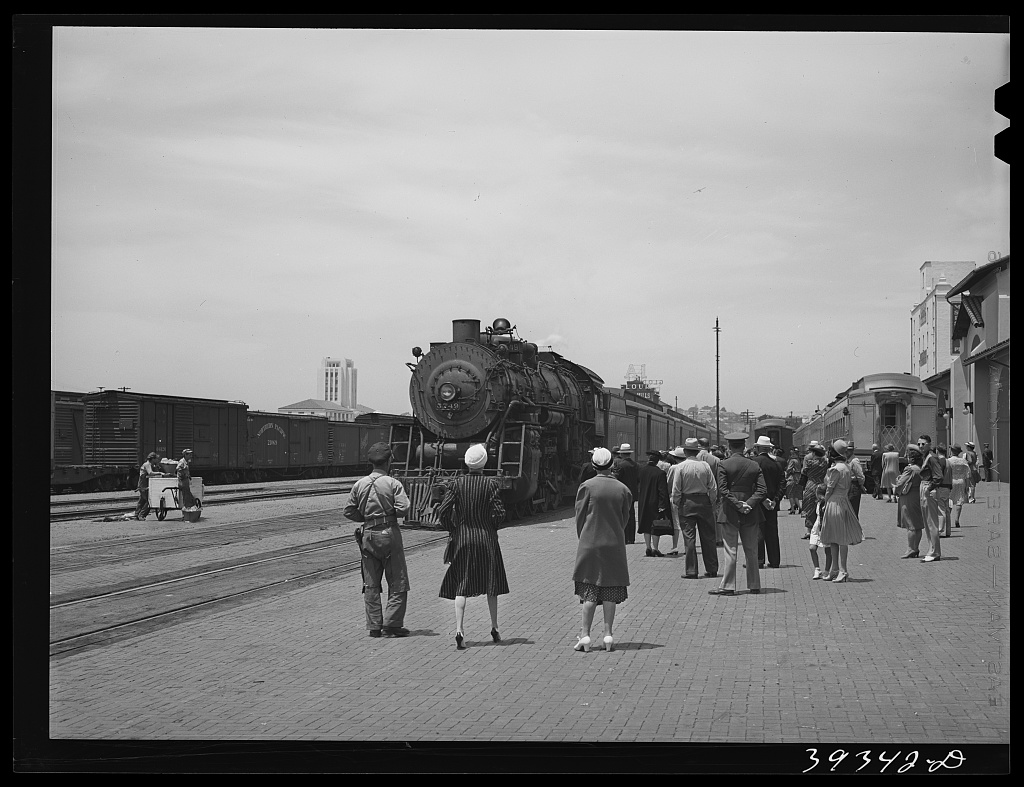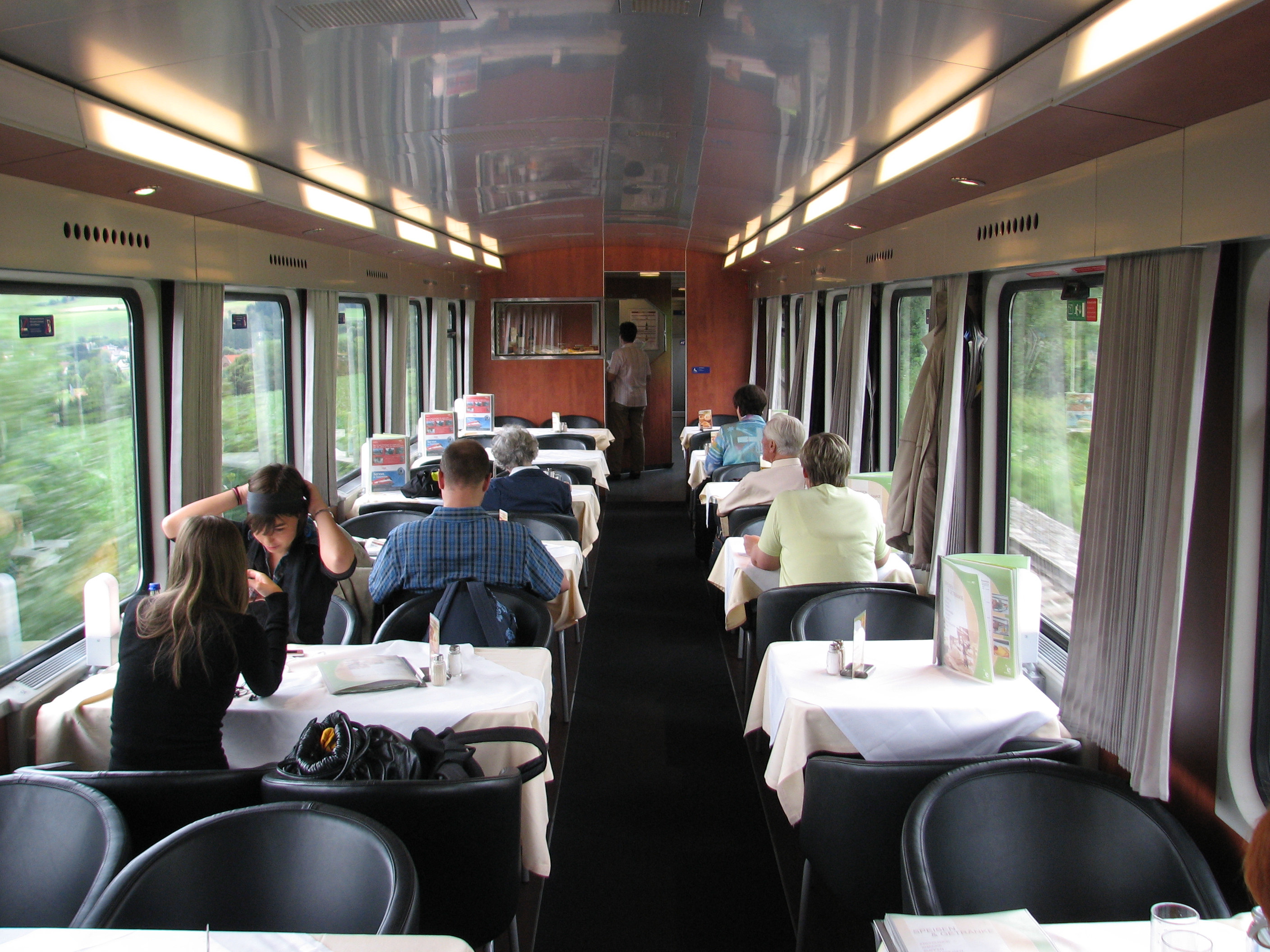|
Valley Flyer (ATSF Train)
The ''Valley Flyer'' was a short-lived List of named passenger trains, named train, passenger train of the Atchison, Topeka and Santa Fe Railway in the United States. The all-Passenger car (rail)#Heavyweight vs. lightweight, heavyweight, "semi-streamlined" train ran between Bakersfield, California, Bakersfield and Oakland, California (through California's San Joaquin Valley on the railway's Atchison, Topeka and Santa Fe Railway Valley Division, Valley Division, hence the name) during the 1939–1940 Golden Gate International Exposition on Treasure Island, San Francisco, Treasure Island in San Francisco Bay. Motive power was two Baldwin Locomotive Works, Baldwin-built 1300 class 4-6-2, 4-6-2 "Pacific" locomotives refurbished and decorated for the train. It was the Santa Fe's first attempt at streamlining older steam power. History The first run was on June 11, 1939. The train left Bakersfield daily at 6:30 a.m. PST and arrived in Oakland at 12:35 p.m., then returned at 1:55 p. ... [...More Info...] [...Related Items...] OR: [Wikipedia] [Google] [Baidu] |
Inter-city Rail
Inter-city rail services are Express train, express trains that run services that connect cities over longer distances than Commuter rail, commuter or Regional rail, regional trains. They include rail services that are neither short-distance commuter rail trains within one city area nor slow regional rail trains stopping at all stations and covering local journeys only. An inter-city train is typically an express train with limited stops and comfortable carriages to serve long-distance travel. Inter-city rail sometimes provides international services. This is most prevalent in Europe because of the proximity of its 50 countries to a 10,180,000-square-kilometre (3,930,000-square-mile) area. Eurostar and EuroCity are examples. In many European countries, the word InterCity or Inter-City is an official brand name for a network of regular-interval and relatively long-distance train services that meet certain criteria of speed and comfort. That use of the term appeared in the United ... [...More Info...] [...Related Items...] OR: [Wikipedia] [Google] [Baidu] |
Locomotive
A locomotive is a rail transport, rail vehicle that provides the motive power for a train. Traditionally, locomotives pulled trains from the front. However, Push–pull train, push–pull operation has become common, and in the pursuit for longer and heavier freight trains, companies are increasingly using distributed power: single or multiple locomotives placed at the front and rear and at intermediate points throughout the train under the control of the leading locomotive. Etymology The word ''locomotive'' originates from the Latin language, Latin 'from a place', Ablative case, ablative of 'place', and the Medieval Latin 'causing motion', and is a shortened form of the term ''locomotive engine'', which was first used in 1814 to distinguish between self-propelled and stationary steam engines. Classifications Prior to locomotives, the motive force for railways had been generated by various lower-technology methods such as human power, horse power, Gravity railroad, g ... [...More Info...] [...Related Items...] OR: [Wikipedia] [Google] [Baidu] |
Dining Car
A dining car (American English) or a restaurant car (British English), also a diner, is a passenger railroad car that serves meals in the manner of a full-service, sit-down restaurant. These cars provide the highest level of service of any railroad food service car, typically employing multiple servers and kitchen staff members. Consequently, they are the most expensive to operate. It is distinct from other railroad food service cars that do not duplicate the full-service restaurant experience, such as buffet cars, cars in which one purchases food from a walk-up counter to be consumed either within the car or elsewhere in the train. Grill cars, in which customers sit on stools at a counter and purchase and consume food cooked on a grill behind the counter are generally considered to be an "intermediate" type of dining car. History United States Before dining cars in passenger trains were common in the United States, a rail passenger's option for meal service in transit was t ... [...More Info...] [...Related Items...] OR: [Wikipedia] [Google] [Baidu] |
Fred Harvey Company
The Fred Harvey Company was the owner of the Harvey House chain of restaurants, hotels and other hospitality industry businesses alongside railroads in the Western United States. It was founded in 1876 by Fred Harvey (entrepreneur), Fred Harvey to cater to the growing number of train passengers. When Harvey died in 1901, his family inherited 45 restaurants and 20 dining cars in 12 states. During World War II, Harvey Houses opened again to serve soldiers as they traveled in troop trains across the U.S. By 1968, when it was sold to Amfac, Inc. (now Xanterra Parks and Resorts, as of 2002), the Fred Harvey Company was the sixth largest food retailer in the United States. It left behind a lasting legacy of good food, dedication to customers, decent treatment of employees, and preservation of local traditions.Fried, Stephen. ''Appetite for America: how visionary businessman Fred Harvey built a railroad hospitality empire''. New York: Bantam Books, 2010. p. 45. History The comp ... [...More Info...] [...Related Items...] OR: [Wikipedia] [Google] [Baidu] |
Lounge Car
A lounge car (sometimes referred to as a buffet lounge, buffet car, club car or grill car) is a type of passenger car on a train, in which riders can purchase food and drinks. The car may feature large windows and comfortable train seats to create a relaxing diversion from standard coach or dining options. In earlier times (and especially on the "name" trains), a lounge car was more likely to have a small kitchen, or grill and a limited menu. Food was prepared to order and often cooked, though items such as club sandwiches would have usually been part of the offerings. The cars were often operated by the Pullman Company, and in other cases by the railroad directly as part of the dining car department (on the Atchison, Topeka and Santa Fe Railway the Fred Harvey Company operated the food concession). Lounge cars operated by Pullman were exclusively for the use of sleeping car passengers, while those operated by the railroad were available to coach as well as first-class travelers. ... [...More Info...] [...Related Items...] OR: [Wikipedia] [Google] [Baidu] |
Baggage Car
A passenger railroad car or passenger car (American English), also called a passenger carriage, passenger coach (British English and International Union of Railways), or passenger bogie (Indian English) is a railroad car that is designed to carry passengers, usually giving them space to sit on train seats. The term ''passenger car'' can also be associated with a sleeping car, a baggage car, a dining car, railway post office and prisoner transport cars. The first passenger cars were built in the early 1800s with the advent of the first railroads, and were small and little more than converted freight cars. Early passenger cars were constructed from wood; in the 1900s construction shifted to steel and later aluminum for improved strength. Passenger cars have increased greatly in size from their earliest versions, with modern bi-level passenger cars capable of carrying over 100 passengers. Amenities for passengers have also improved over time, with developments such as lighti ... [...More Info...] [...Related Items...] OR: [Wikipedia] [Google] [Baidu] |
Combine Car
A combine car in North American parlance, most often referred to simply as a combine, is a type of railroad car which combines sections for both passengers and freight. Most often, it was used on short lines to carry passengers and their luggage, as a full car would not have been cost effective. One half (or less) of the car is built like a baggage car while the other half of the car is a regular passenger car. This type of combine is referred to as a ''coach-baggage''. Another common type of combine in railroad use was the ''coach- RPO''. A portion of this type of car was configured as a railway post office while the rest of the car was configured as a coach. The New York, New Haven and Hartford Railroad operated a combine separated into an RPO and a smoking section. In 1893, Pullman produced a combine with a baggage area, buffet, barber shop, bathroom with tub and a smoking section featuring a fireplace. When Amtrak took over in 1971, lightweight combines were used on mo ... [...More Info...] [...Related Items...] OR: [Wikipedia] [Google] [Baidu] |
Golden Gate (passenger Train)
The ''Golden Gate'' was one of the named passenger trains of the Atchison, Topeka and Santa Fe Railway (Santa Fe). It ran on the railroad's Valley Division between Oakland and Bakersfield, California; its bus connections provided service between San Francisco and Los Angeles via California's San Joaquin Valley. History In 1911, the Santa Fe tried to compete with Southern Pacific Railroad (SP) with overnight trains that included cars to and from San Diego, the ''Saint'' train to San Francisco and the ''Angel'' train to Los Angeles. The Santa Fe route via San Bernardino and Barstow was longer than the SP route via Glendale and Lancaster and the San Francisco to Los Angeles schedule was 16 hours 45 minutes, compared to 14:45 for SP's ''Owl'' and 13:45 for the ''Lark''. The ''Saint'' and ''Angel'' were withdrawn in 1918. Although rumors soon flew of their return, Santa Fe later cited competition by bus services as preventing restoration of the ''Saint'' and ''Angel'' schedules. ... [...More Info...] [...Related Items...] OR: [Wikipedia] [Google] [Baidu] |
AT&SF 1337 Class
The Atchison, Topeka and Santa Fe Railway , often referred to as the Santa Fe or AT&SF, was one of the largest Railroad classes, Class 1 railroads in the United States between 1859 and 1996. The Santa Fe was a pioneer in intermodal freight transport; at various times, it operated an airline, the short-lived Santa Fe Skyway, and the Santa Fe Railroad tugboats. Its bus line extended passenger transportation to areas not accessible by rail, and ferryboats on the San Francisco Bay allowed travelers to complete their westward journeys to the Pacific Ocean. The AT&SF was the subject of a popular song, Harry Warren and Johnny Mercer's "On the Atchison, Topeka and the Santa Fe", written for the film ''The Harvey Girls'' (1946). The railroad officially ceased independent operations on December 31, 1996, when it merged with the Burlington Northern Railroad to form the BNSF Railway, Burlington Northern and Santa Fe Railway. History Atchison, Topeka & Santa Fe Railway The railroad was ch ... [...More Info...] [...Related Items...] OR: [Wikipedia] [Google] [Baidu] |





